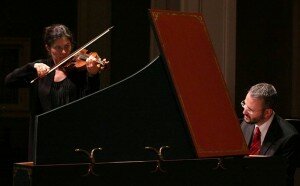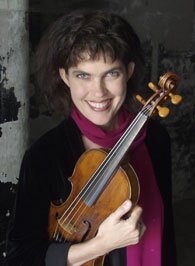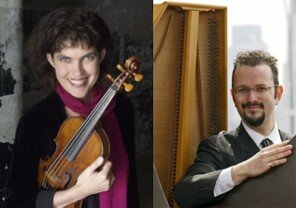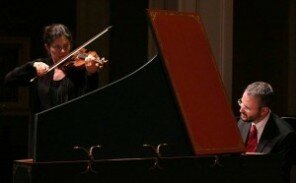
Baroque violinist Ingrid Matthews and harpsichordist Byron Schenkman might be musically joined at the hip, so in tune with each other they are. It’s no surprise. They have been playing together since their college days and the enjoyment they still get from giving a joint recital, as they did last Saturday, is clear.
Directors of Seattle Baroque Orchestra, which they started in 1994, they chose for their program at Town Hall a group of 17th-century works, all of which used a repeating bass line, or ground bass, with over it a melody and increasingly intricate variations. They called the program Common Ground.
The works ranged from an English collection published in 1685, Playford’s The Division Violin, (divisions being the English word then for variations) to several European composers whose names and works are well known to today’s Baroque musicians but less familiar outside that genre: Sweelinck, Biber, Schmelzer, and Muffat being four of them. These sophisticated composers had different musical challenges before them than did later composers of variations.
The harpsichord has no volume change. Unlike the piano you can’t hit the key harder to make the sound louder (or less to make it softer) and there is no pedal to hold the note. Later harpsichords got around this to an extent by adding a second keyboard (like an organ) so the sound could be doubled or made more brilliant by adding an octave note.
Composers thus had to write without that dimension and many of these variation works start quite simple and gradually become more and more complicated with the fingers flying at warp speed in a coruscating plethora of notes all over the keyboard, or with chords, and the performer adding imaginative ornamentation.
It’s not easy to play this way on a modern piano at the fast speed indicated. The action of the harpsichord is very light, that of the piano much heavier, and the sound decay much slower on a piano. However, several pianists of today have come close to approximating the clear, articulated sound which is second nature to harpsichord players like Schenkman.
But on an instrument like the one Schenkman played, a copy of a 17th-century one manual Italian harpsichord, the performer can play to the limits of the instrument, engendering a lot of excitement, which would be very difficult if this was tried on a modern piano.
As for the Baroque violin, it does have a volume range and can be played as softly and as expressively as whispering silk, but not as loudly as a modern violin. The Baroque bow is concave, so if the player presses on it to draw a louder sound from the violin string, the bow bends, the hair tension softens and it doesn’t sound louder at all. On a modern bow, which is convex, pressing tautens the hair getting the opposite effect. Like the harpsichord, the action is very light giving the necessary agility to play these amazingly fast passages and still have them sound clear.
Matthews and Schenkman played several works together, neither of them with any music to read from, Schenkman with his eyes always on Matthews so that his playing was perfectly together with hers.
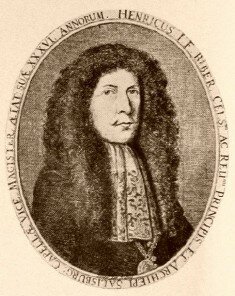
The Annunciation, one of Biber’s series titled The Mystery Sonatas, struck the ear with dramatic impact from the first notes. One could almost hear the story being told through the music’s declamatory statements and long melismatic phrases, all of which came to mind with this performance.
Matthews played perhaps the best known piece of the program, Biber’s Passacaglia for solo violin, in which the violin takes all the roles including the repeating bass line. It’s a wonderfully clear exponent of the style as that line is always clear, a simple descending four notes of a scale, with a forest of activity above. Matthews played superbly: It was a pleasure to hear this played as it should be.
Schenkman, another superb musician, also had several solos including the Toccata 1 and Passacaglia by Johann Kaspar Kerll with a free interpretation of tempi as is usual in the toccata, and an explosion of expression and passion coming through. His rhythm is always rock solid and touch is balanced, no matter how fast the runs, in another exciting performance. The well-designed program began and ended with the mostly lighter selections from the Playford book.
